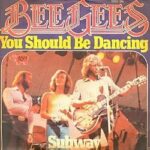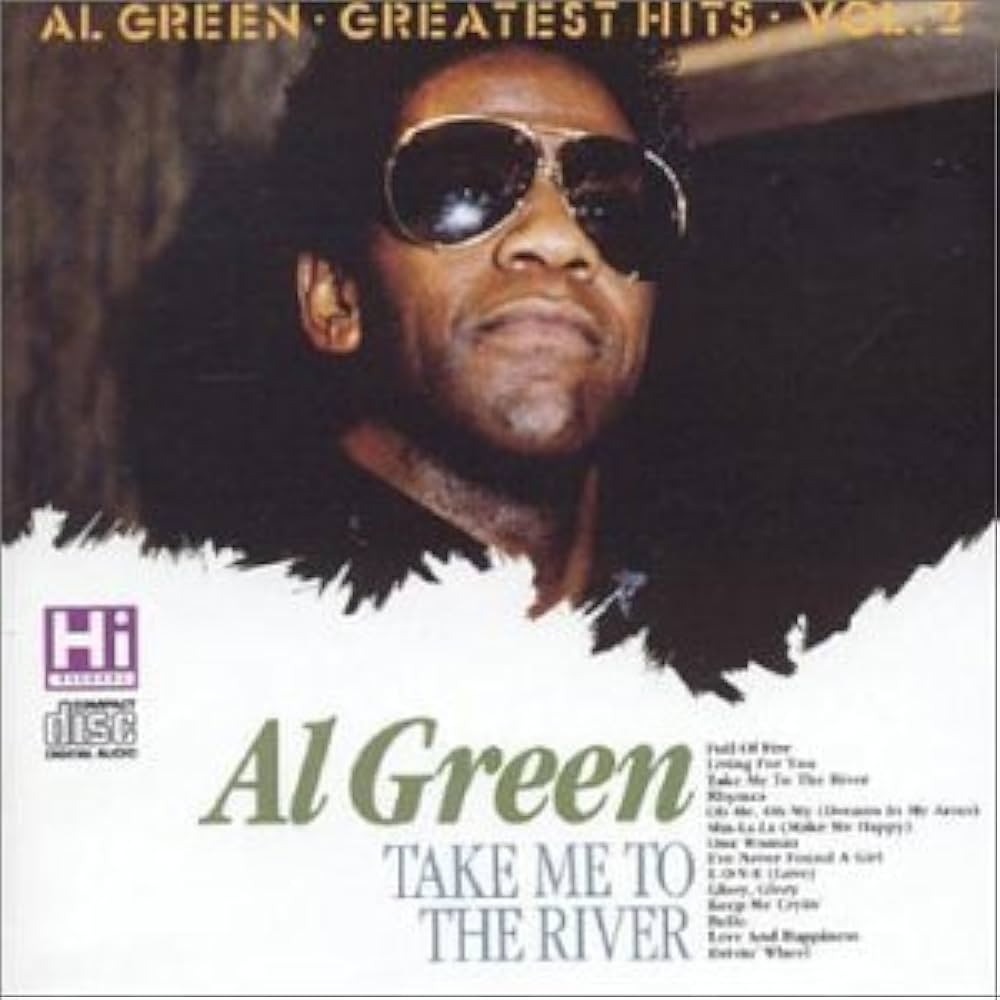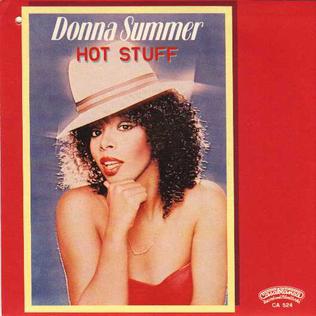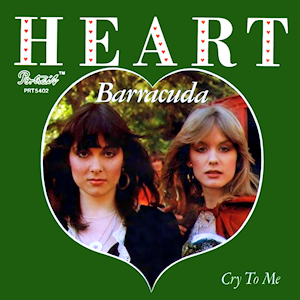 There are moments in music history where sound and movement become one — where a rhythm doesn’t just make you tap your foot, it compels you to move your entire body. The Bee Gees’ “You Should Be Dancing” wasn’t just one of those moments; it defined one. Released in 1976, the song marked a dazzling turning point for the group, transforming them from soft-rock balladeers into kings of the disco era. It wasn’t merely a hit — it was a revolution in polyester and platform shoes, a shimmering anthem that lit up dance floors from New York to London to Studio 54.
There are moments in music history where sound and movement become one — where a rhythm doesn’t just make you tap your foot, it compels you to move your entire body. The Bee Gees’ “You Should Be Dancing” wasn’t just one of those moments; it defined one. Released in 1976, the song marked a dazzling turning point for the group, transforming them from soft-rock balladeers into kings of the disco era. It wasn’t merely a hit — it was a revolution in polyester and platform shoes, a shimmering anthem that lit up dance floors from New York to London to Studio 54.
But “You Should Be Dancing” was more than a catchy tune. It became the heartbeat of an era, a symbol of the hedonism, freedom, and feverish joy of the late 1970s. It bridged generations, broke genre boundaries, and forever altered how the Bee Gees were perceived. What began as a simple groove in a Miami studio turned into a global cultural moment — one that still vibrates through pop culture nearly five decades later.
From Ballads to Boogie
Before disco shimmered into their world, the Bee Gees were already one of the most successful groups of their generation. With classics like “Massachusetts,” “To Love Somebody,” and “How Can You Mend a Broken Heart,” they had built a reputation for exquisite harmonies and tender ballads. But by the early ‘70s, their sound was beginning to stagnate. The British-Australian trio — brothers Barry, Robin, and Maurice Gibb — needed reinvention.
That reinvention came through rhythm. Working with producer Arif Mardin in Miami, the brothers began experimenting with funk and R&B grooves. The result was 1975’s Main Course, an album that hinted at their future with tracks like “Jive Talkin’” and “Nights on Broadway.” But it was “You Should Be Dancing,” recorded the following year, that completed their transformation.
For the first time, Barry Gibb’s falsetto — that glorious, piercing, and otherworldly instrument — became the centerpiece. His voice, pushed to its limits, sliced through the mix like a laser beam, giving the song its instantly recognizable edge. Robin and Maurice layered lush harmonies beneath him, creating a wall of sound that felt sleek, sensual, and utterly alive.
The Bee Gees weren’t just keeping up with the disco trend; they were perfecting it.
The Studio 54 Sound
“You Should Be Dancing” is built around an irresistible groove. The bassline pulses like a heartbeat, the hi-hat shimmers like city lights, and the rhythm guitar scratches and slides in perfect sync. The song’s production — crisp yet warm — captures the essence of a crowded dance floor: chaotic, sweaty, euphoric.
At the core of that rhythm was a young drummer named Dennis Bryon, whose four-on-the-floor beat became the group’s signature pulse. The percussionist Stephen Stills (of Crosby, Stills & Nash fame) even dropped by the studio during recording sessions, adding congas to the mix. Miami’s Criteria Studios became a laboratory of rhythm, and “You Should Be Dancing” was its finest experiment.
Every sonic element was designed to move the listener. From the opening guitar lick to the cascading falsetto chorus, the song practically commands you to move. “What you doin’ on your back?” Barry teases, before delivering the directive that became a mantra for an era: “You should be dancing!”
It wasn’t just a lyric — it was an invitation, an attitude, and a lifestyle.
A Global Explosion
When the song hit the airwaves in 1976, it exploded. “You Should Be Dancing” shot to number one on the Billboard Hot 100, making the Bee Gees the rare group to have topped charts across three decades. It also went to number one in Canada and became a major hit across Europe.
But its influence extended far beyond radio. The song became a fixture in clubs around the world, a DJ staple that united disco fans under a glittering mirror ball. It was one of the first Bee Gees songs to truly conquer the American dance scene, and it laid the groundwork for what would soon become the Saturday Night Fever phenomenon.
Before John Travolta’s white suit, before the Bee Gees became synonymous with disco’s golden age, there was “You Should Be Dancing.” It was the spark that ignited the inferno.
The Saturday Night Fever Effect
Two years after its initial release, “You Should Be Dancing” reemerged in the film that defined an entire cultural moment: Saturday Night Fever (1977). Its placement in the movie — during an electrifying dance floor scene — immortalized it forever.
John Travolta’s Tony Manero, strutting with unshakable confidence, became the embodiment of disco’s bravado. When “You Should Be Dancing” blared from the speakers as he spun and posed under the lights, the Bee Gees’ music wasn’t just a soundtrack — it was the heartbeat of the scene.
The song captured the essence of disco’s seductive appeal: escape, expression, and pure physical joy. Through Travolta’s moves and the Bee Gees’ groove, millions of moviegoers around the world discovered the liberation of the dance floor.
Saturday Night Fever became one of the most successful soundtracks of all time, and “You Should Be Dancing” found a permanent home in pop culture.
The Voice That Changed Everything
Barry Gibb’s falsetto was already taking shape on Main Course, but “You Should Be Dancing” turned it into his calling card. It wasn’t just a stylistic choice — it was revolutionary.
At a time when most male rock singers aimed for gravelly grit or soulful smoothness, Barry reached for the sky. His high-pitched delivery added a new dimension to masculinity in pop music: seductive, playful, confident, and daring. The sound was instantly recognizable and utterly addictive.
The song also showcased how the Bee Gees’ vocal chemistry worked in perfect harmony. Barry’s falsetto soared over Robin’s mournful mid-range and Maurice’s steady baritone, creating layers of emotion that transcended the simple lyric. They didn’t just sing — they inhabited the groove.
That vocal sound would define the Bee Gees’ next decade, carrying them through hits like “Stayin’ Alive,” “Night Fever,” and “More Than a Woman.” But it all truly began here — on a dance floor lit by “You Should Be Dancing.”
Beyond the Disco Boom
For many, the song represents the apex of the disco era — a flashpoint in time when everything felt shiny, sexy, and unstoppable. But its legacy extends far beyond the mirror-ball moment.
“You Should Be Dancing” influenced the sound of modern pop and dance music in profound ways. Artists from Michael Jackson to Daft Punk drew inspiration from its tight grooves and layered harmonies. It helped define the architecture of modern dance-pop: rhythmic precision, soulful melody, and lush vocal arrangements.
Even after the disco backlash of the early ‘80s, when the genre was mocked and discarded by mainstream rock culture, “You Should Be Dancing” survived. It never sounded dated, because its core ingredients — joy, rhythm, and unity — are timeless.
By the 1990s and 2000s, the song had been rediscovered by new generations. It appeared in films, commercials, and club remixes, serving as both nostalgia and renewal. Modern artists like Justin Timberlake, Bruno Mars, and The Weeknd owe part of their groove-driven success to the DNA of songs like “You Should Be Dancing.”
A Celebration of Movement
At its heart, “You Should Be Dancing” is about liberation through movement. The lyrics are simple, almost primal, because they’re not meant to be analyzed — they’re meant to be felt.
There’s something universal in that refrain. Dance is one of humanity’s oldest forms of expression, and the Bee Gees tapped into that instinct with uncanny precision. The song doesn’t just describe dancing — it creates the desire to dance.
It’s also worth noting that, beneath the glitter, the Bee Gees’ message was one of inclusivity. The disco scene, often dismissed by critics as superficial, was actually one of the most diverse musical movements in history. It brought together people of all races, genders, and sexualities on equal footing. On the dance floor, everyone was free.
“You Should Be Dancing” embodies that ethos. It’s not about who you are, what you look like, or where you come from — it’s about surrendering to the beat, about finding joy in rhythm and connection.
The Song That Outlasted an Era
Disco may have had a relatively short reign, but “You Should Be Dancing” outlived it by decades. It continues to pulse through film soundtracks, TV shows, and cultural references. From Saturday Night Fever to Despicable Me, from wedding receptions to TikTok videos, it refuses to die.
The Bee Gees themselves endured countless reinventions, but this song remains one of their purest statements of vitality. It’s the moment when everything clicked — when the brothers’ songwriting genius met the pulse of the world.
Even after disco “died,” the Bee Gees never stopped moving. Their harmonies and rhythms evolved into timeless pop ballads like “How Deep Is Your Love” and “Too Much Heaven,” but they always carried a spark of that same kinetic energy.
And when Barry Gibb performs “You Should Be Dancing” live today, decades after its release, the joy in the crowd is palpable. It’s not nostalgia — it’s resurrection.
The Modern Echo
In a world where musical trends change overnight, “You Should Be Dancing” stands as proof that pure rhythm never goes out of style. DJs continue to spin it in clubs and remix it for new audiences. Its DNA lives in modern hits like Dua Lipa’s “Don’t Start Now” and Silk Sonic’s “Fly As Me.”
The song’s pulsating beat and ecstatic spirit have made it a go-to reference point for anyone trying to capture the essence of fun, freedom, and groove. It’s the kind of track that, even if you’ve never heard it before, feels instantly familiar — like it’s been waiting for you.
That’s the mark of true greatness: not just being part of history, but shaping the energy of every era that follows.
A Timeless Groove
“You Should Be Dancing” isn’t just one of the Bee Gees’ best songs — it’s one of the defining anthems of the 20th century. It distilled an entire movement’s energy into three and a half minutes of sonic euphoria. It turned the Bee Gees from harmony singers into global icons and gave the world one of its most enduring invitations to let go and move.
And perhaps that’s why it still matters. Every generation needs its escape — its moment to shine under flashing lights, to feel free from the weight of the world. The Bee Gees captured that universal truth in one unforgettable groove.
Decades later, the message hasn’t aged a day. The disco ball may have slowed, but the song still plays on — urging everyone, everywhere, to remember one simple truth:
You should be dancing.


